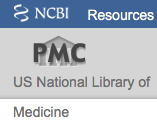Jéssica Rebouças-Silva, Nathaly Alcazar Amorim, Flávio Henrique Jesus-Santos, Jéssica Aparecida de Lima, Jonilson Berlink Lima, Andresa A. Berretta, and Valéria M. Borges
Abstract
Leishmaniasis is a widespread group of neglected vector-borne tropical diseases that possess serious therapeutic limitations. Propolis has been extensively used in traditional medical applications due to its range of biological effects, including activity against infectious agents. Here we evaluated the leishmanicidal and immunomodulatory properties of Brazilian green propolis extract (EPP-AF®) and a gel formulation incorporating EPP-AF®, in both in vitro and in vivo models of Leishmania amazonensis infection. Propolis extract, obtained from a standardized blend following hydroalcoholic extraction, showed the characteristic fingerprint of Brazilian green propolis as confirmed by HPLC/DAD. A carbopol 940 gel formulation was obtained containing propolis glycolic extract at 3.6% w/w. The release profile, assessed using the Franz diffusion cell protocol, demonstrated a gradual and prolonged release of p-coumaric acid and artepillin C from the carbomer gel matrix. Quantification of p-coumaric acid and artepillin C in the gel formulation over time revealed that p-coumaric acid followed the Higuchi model, dependent on the disintegration of the pharmaceutical preparation, while artepillin C followed a zero-order profile with sustained release. In vitro analysis revealed the ability of EPP-AF® to reduce the infection index of infected macrophages (p < 0.05), while also modulating the production of inflammatory biomarkers. Decreases in nitric oxide and prostaglandin E2 levels were observed (p < 0.01), suggesting low iNOS and COX-2 activity. Furthermore, EPP-AF® treatment was found to induce heme oxygenase-1 antioxidant enzyme expression in both uninfected and L. amazonensis-infected cells, as well as inhibit IL-1β production in infected cells (p < 0.01). ERK-1/2 phosphorylation was positively correlated with TNF-α production (p < 0.05), yet no impact on parasite load was detected. In vivo analysis indicated the effectiveness of topical treatment with EPP-AF® gel alone (p < 0.05 and p < 0.01), or in combination with pentavalent antimony (p < 0.05 and p < 0.001), in the reduction of lesion size in the ears of L. amazonensis-infected BALB/c mice after seven or 3 weeks of treatment, respectively. Taken together, the present results reinforce the leishmanicidal and immunomodulatory effects of Brazilian green propolis, and demonstrate promising potential for the EPP-AF® propolis gel formulation as a candidate for adjuvant therapy in the treatment of Cutaneous Leishmaniasis.
* THESE STATEMENTS HAVE NOT BEEN EVALUATED BY THE FOOD AND DRUG ADMINISTRATION. THIS IS NOT INTENDED TO DIAGNOSE, TREAT CURE OR PREVENT ANY DISEASE.
